DFB
Well-known member
- Aug 12, 2019
- 4,607
- 2,382
The following are two of the many solvent products Koch Chemie make. One is powerful but safe, one is powerful and should be used with care.................
Koch Chemie Teerwasche-A TEA
Removing tar and adhesive residue would have to be one the most tedious and annoying detailing tasks there is. It's also a task that poses significant risk to your paintwork, especially if its been on the car for extended periods. So, having the assistance of an effective chemical is vital.
Koch Chemie TEA is very similar to Carpro's TarX, both in how it works and how it smells. I tried looking for the TarX SDS to compares, but Capro really don't want you to do this because I simply can't find it. So, you are just going to have to take my word for it, both products have that citrus-like aroma and quickly soften tar deposits for easy removal. In addition to tar removal, TEA and TarX will assist in the removal of stubborn adhesive residue.

How To Use -
My tar removal process takes place after cleaning the vehicle and while still wet. This is because if you need to agitate the affected areas with the tar remover, you aren't rubbing dirt into your paint, and while still wet so you can rinse off and neutralize the chemical. Having said that, the sooner you remove tar, the better, so at the very least wipe down the area before and after with a water-less/rinse-less wash.
1. Clean vehicle as usual.
2. Working small sections, spray the affected areas with TEA and allow to dwell. You will see the tar spot start to bleed, which is your clue to rinse or agitate. I've found a strong pressure washer blast will remove most tar deposits using this method, but if they remain, repeat the process and agitate with a microfiber towel.
3. After treatment, rinse the surrounding areas thoroughly to remove any remaining chemical residue.
The same process would apply to adhesive removal.
Usage Notes -
- TEA is ready to use, no dilution required.
- TEA can be sprayed direct or into a towel. You will need to purchase the spray head separately though.
- This is a solvent, so be careful when using it, and where possible avoid using in direct sunlight or on hot surfaces. Never let it dry on the treated surface.
- Keep in mind these products are a last resort, as in use the least aggressive method first (pre-soak, washing). And yes, they can affect waxes and sealants.
- For stubborn stains, I've found the TRC Jersey Bug Scrubber to help the situation.
- If removing adhesive, chose your towel wisely as you will be throwing it away when you are done.
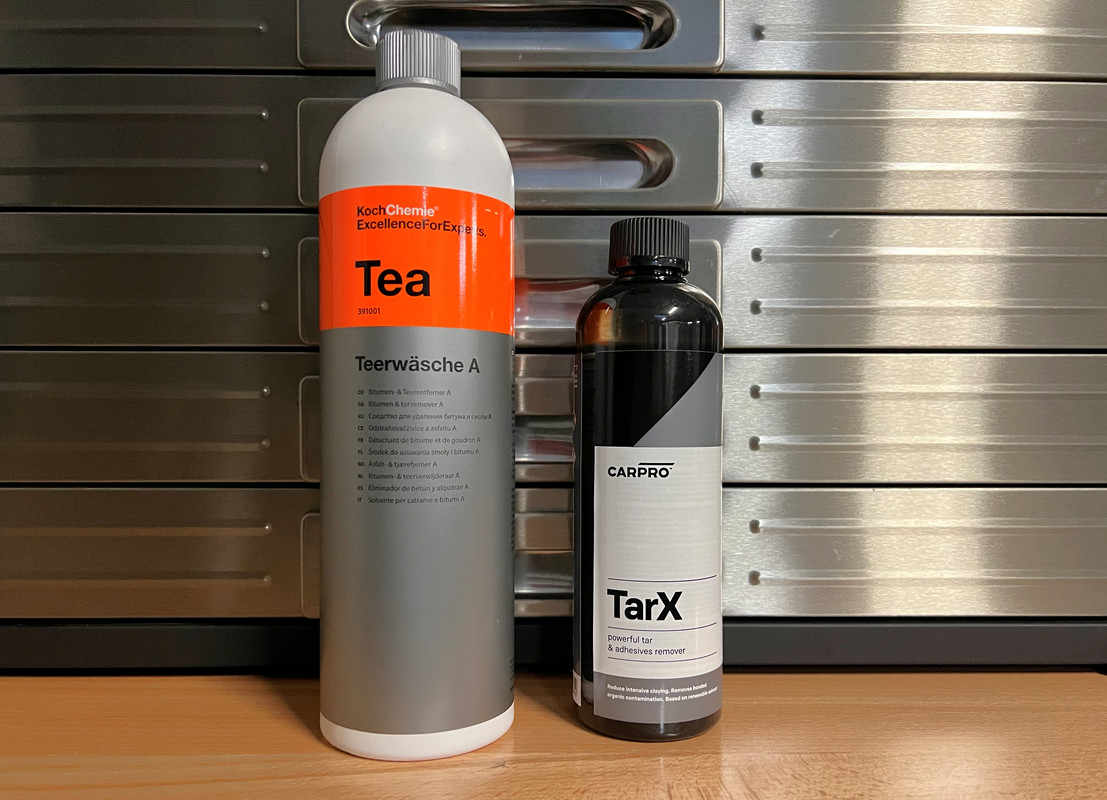
Koch Chemie Eulex EU
This is a last resort product used for removal of extremely stubborn tar, sap and adhesive deposits. There is no getting around this, Eulex is an extreme duty sledgehammer! It also has a very high evaporation rate, meaning you need to work a little quicker and treat smaller areas. If that reads like it's dangerous to use..............well, that's because it is to a certain extent. So, why use it?
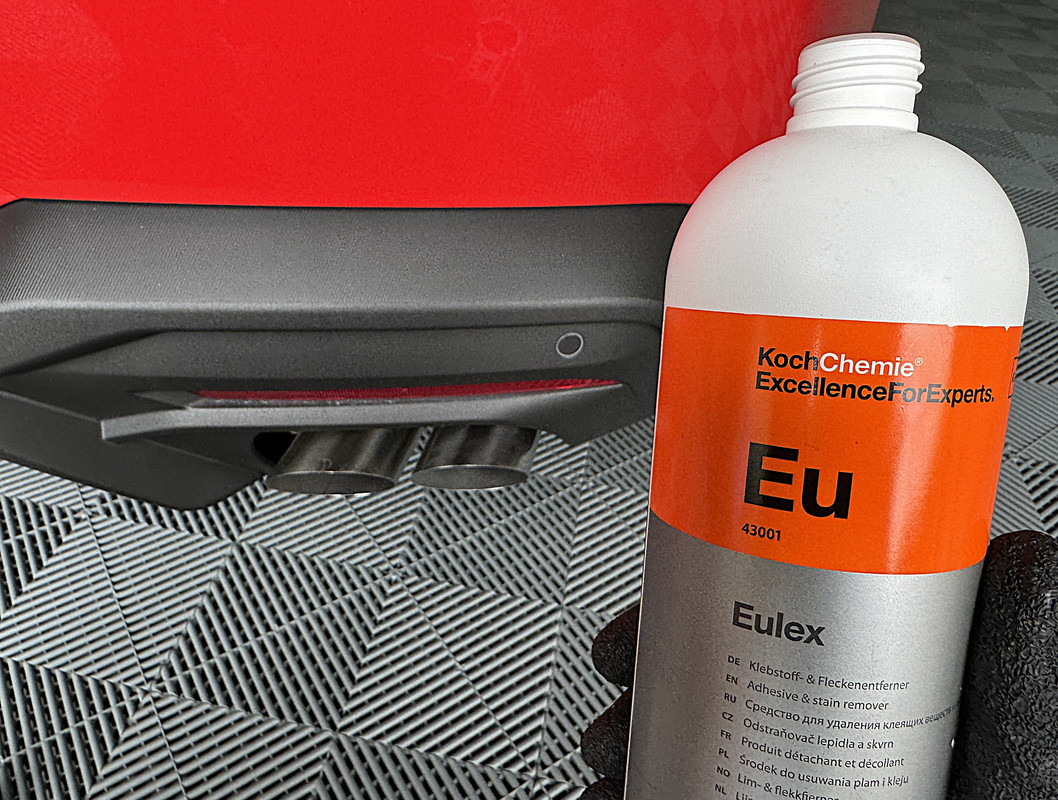
The biggest drawcard of using Eulex is how quickly and easily it will dissolve contamination. There is a risk to that, but then there is also a risk of using a less capable product and having to hammer down on the paint for it to do the desired job. Eulex can be used on painted, glass and metal surfaces to remove the following -
- Adhesives
- Tree sap
- Rubber residue (good for all you tire-fryers)
- Paint overspray mist
- Ink stains
- Oil and grease
- Tar
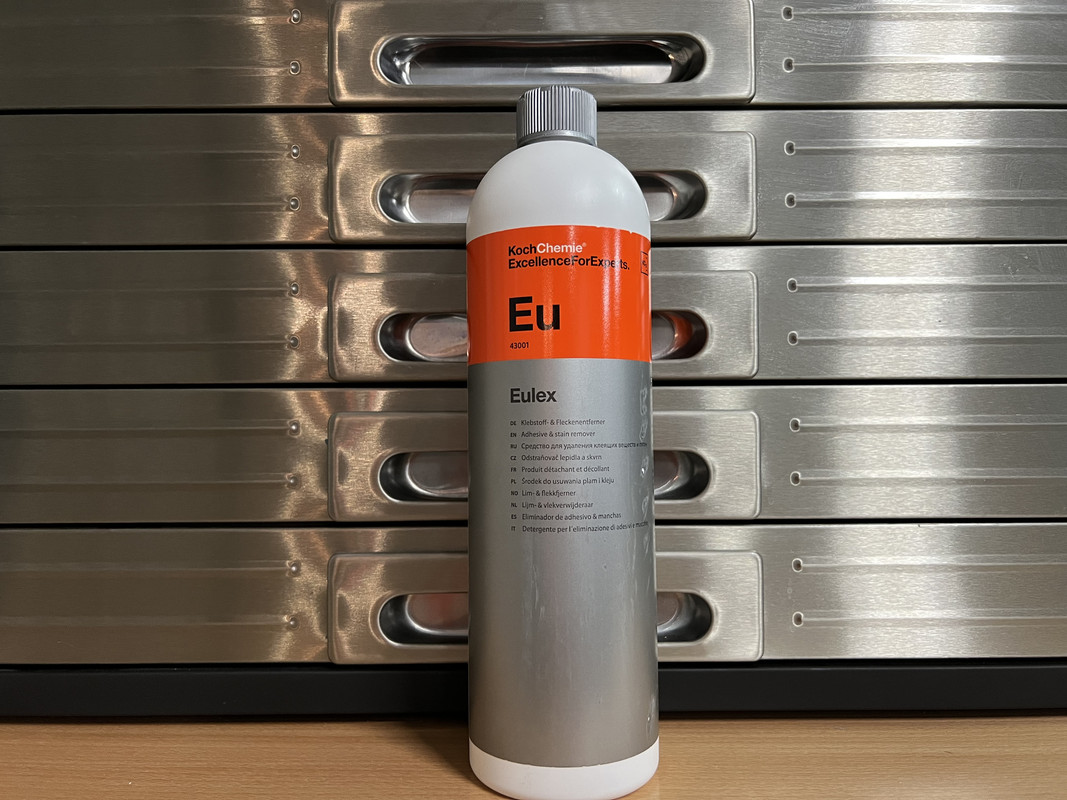
How To Use -
While Eulex is a powerful product, it's safe when used correctly.
1. Wash the vehicle or spot clean before using Eulex.
2. Apply a small amount of Eulex to a towel or microfiber sponge, then lightly dab the affected area to help soften the deposit. Reapply and retreat as needed.
3. Once the contaminant is removed, rinse or neutralize the treated and surrounding areas after use.
Like TEA, I would be using Eulex while the car is still wet and able to be properly rinsed after use.

Usage Notes -
- Be careful with Eulex! It's a strong solvent that won't tolerate fools, so use common sense and work small areas in a well-ventilated space.
- Eulex can be sprayed, but I don't recommend it. I much prefer to apply it to a towel or applicator for more precise control. Like other KCx products, its not supplied with a sprayer, rather a dispensing cap.
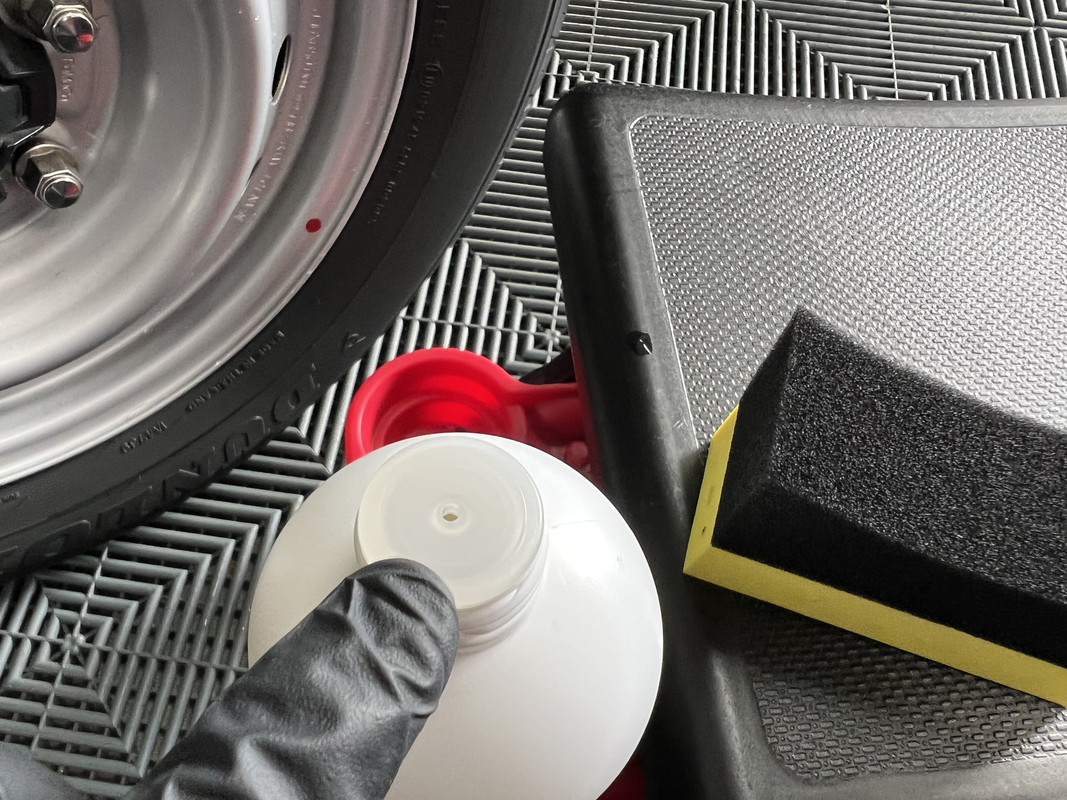
- Do not use Eulex on matte wheels or finishes, you will need Eulex M for that.
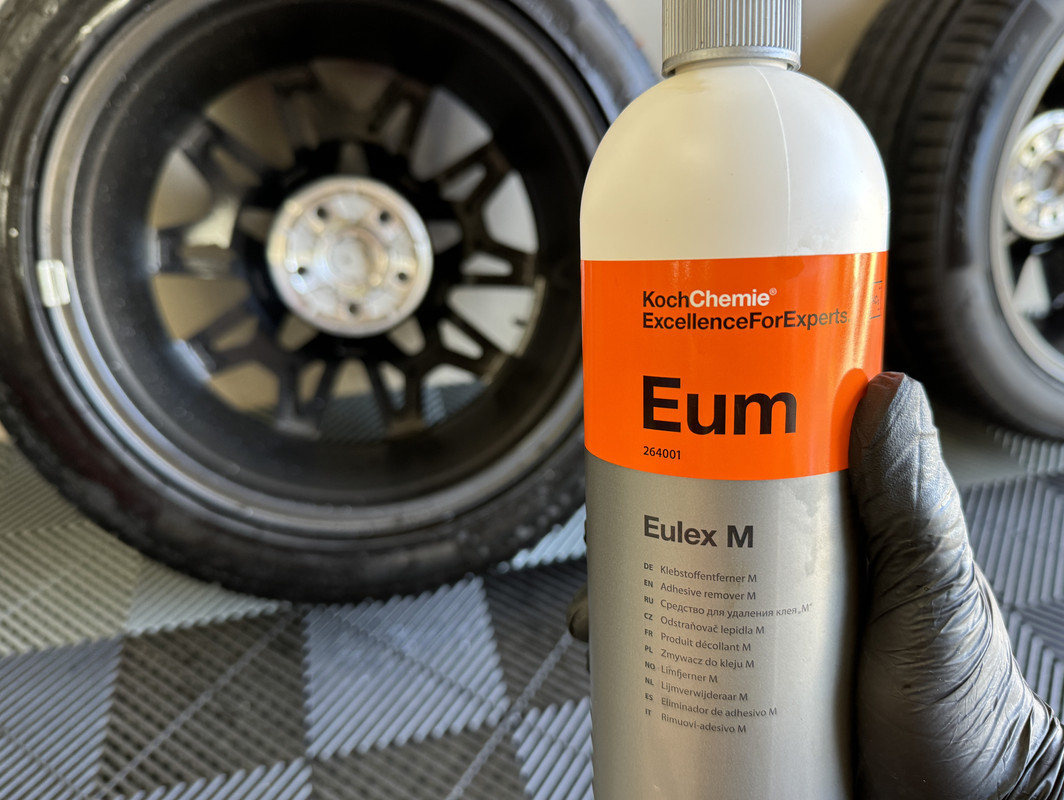
- I've removed paint overspray using Eulex to great success.
- Any towel you use with Eulex is going to be destroyed, so choose wisely. TRC Rip-n-Rag excel here.
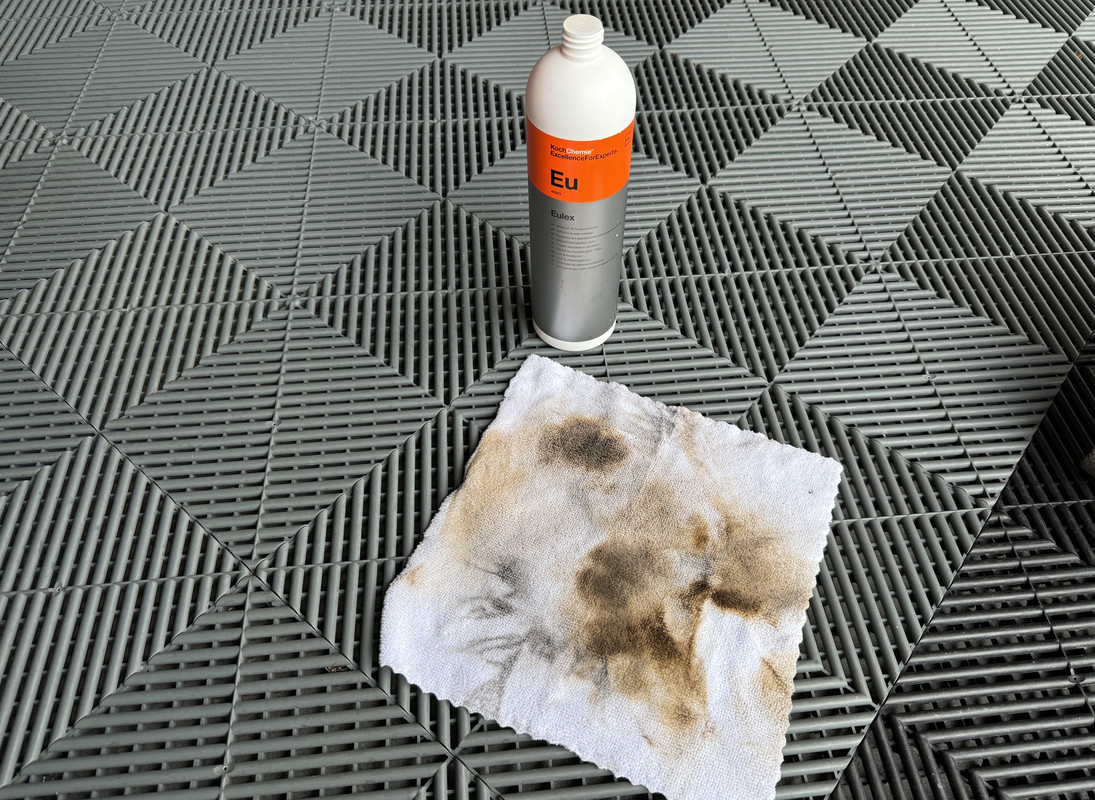

Final Thoughts -
I think there is value in having both of these. TEA will have you sorted in most situations, but Eulex can be a life saver on those really stubborn tar and adhesive deposits.
Koch Chemie Teerwasche-A TEA
Removing tar and adhesive residue would have to be one the most tedious and annoying detailing tasks there is. It's also a task that poses significant risk to your paintwork, especially if its been on the car for extended periods. So, having the assistance of an effective chemical is vital.
Koch Chemie TEA is very similar to Carpro's TarX, both in how it works and how it smells. I tried looking for the TarX SDS to compares, but Capro really don't want you to do this because I simply can't find it. So, you are just going to have to take my word for it, both products have that citrus-like aroma and quickly soften tar deposits for easy removal. In addition to tar removal, TEA and TarX will assist in the removal of stubborn adhesive residue.

How To Use -
My tar removal process takes place after cleaning the vehicle and while still wet. This is because if you need to agitate the affected areas with the tar remover, you aren't rubbing dirt into your paint, and while still wet so you can rinse off and neutralize the chemical. Having said that, the sooner you remove tar, the better, so at the very least wipe down the area before and after with a water-less/rinse-less wash.
1. Clean vehicle as usual.
2. Working small sections, spray the affected areas with TEA and allow to dwell. You will see the tar spot start to bleed, which is your clue to rinse or agitate. I've found a strong pressure washer blast will remove most tar deposits using this method, but if they remain, repeat the process and agitate with a microfiber towel.
3. After treatment, rinse the surrounding areas thoroughly to remove any remaining chemical residue.
The same process would apply to adhesive removal.
Usage Notes -
- TEA is ready to use, no dilution required.
- TEA can be sprayed direct or into a towel. You will need to purchase the spray head separately though.
- This is a solvent, so be careful when using it, and where possible avoid using in direct sunlight or on hot surfaces. Never let it dry on the treated surface.
- Keep in mind these products are a last resort, as in use the least aggressive method first (pre-soak, washing). And yes, they can affect waxes and sealants.
- For stubborn stains, I've found the TRC Jersey Bug Scrubber to help the situation.
- If removing adhesive, chose your towel wisely as you will be throwing it away when you are done.

Koch Chemie Eulex EU
This is a last resort product used for removal of extremely stubborn tar, sap and adhesive deposits. There is no getting around this, Eulex is an extreme duty sledgehammer! It also has a very high evaporation rate, meaning you need to work a little quicker and treat smaller areas. If that reads like it's dangerous to use..............well, that's because it is to a certain extent. So, why use it?

The biggest drawcard of using Eulex is how quickly and easily it will dissolve contamination. There is a risk to that, but then there is also a risk of using a less capable product and having to hammer down on the paint for it to do the desired job. Eulex can be used on painted, glass and metal surfaces to remove the following -
- Adhesives
- Tree sap
- Rubber residue (good for all you tire-fryers)
- Paint overspray mist
- Ink stains
- Oil and grease
- Tar

How To Use -
While Eulex is a powerful product, it's safe when used correctly.
1. Wash the vehicle or spot clean before using Eulex.
2. Apply a small amount of Eulex to a towel or microfiber sponge, then lightly dab the affected area to help soften the deposit. Reapply and retreat as needed.
3. Once the contaminant is removed, rinse or neutralize the treated and surrounding areas after use.
Like TEA, I would be using Eulex while the car is still wet and able to be properly rinsed after use.

Usage Notes -
- Be careful with Eulex! It's a strong solvent that won't tolerate fools, so use common sense and work small areas in a well-ventilated space.
- Eulex can be sprayed, but I don't recommend it. I much prefer to apply it to a towel or applicator for more precise control. Like other KCx products, its not supplied with a sprayer, rather a dispensing cap.

- Do not use Eulex on matte wheels or finishes, you will need Eulex M for that.

- I've removed paint overspray using Eulex to great success.
- Any towel you use with Eulex is going to be destroyed, so choose wisely. TRC Rip-n-Rag excel here.


Final Thoughts -
I think there is value in having both of these. TEA will have you sorted in most situations, but Eulex can be a life saver on those really stubborn tar and adhesive deposits.